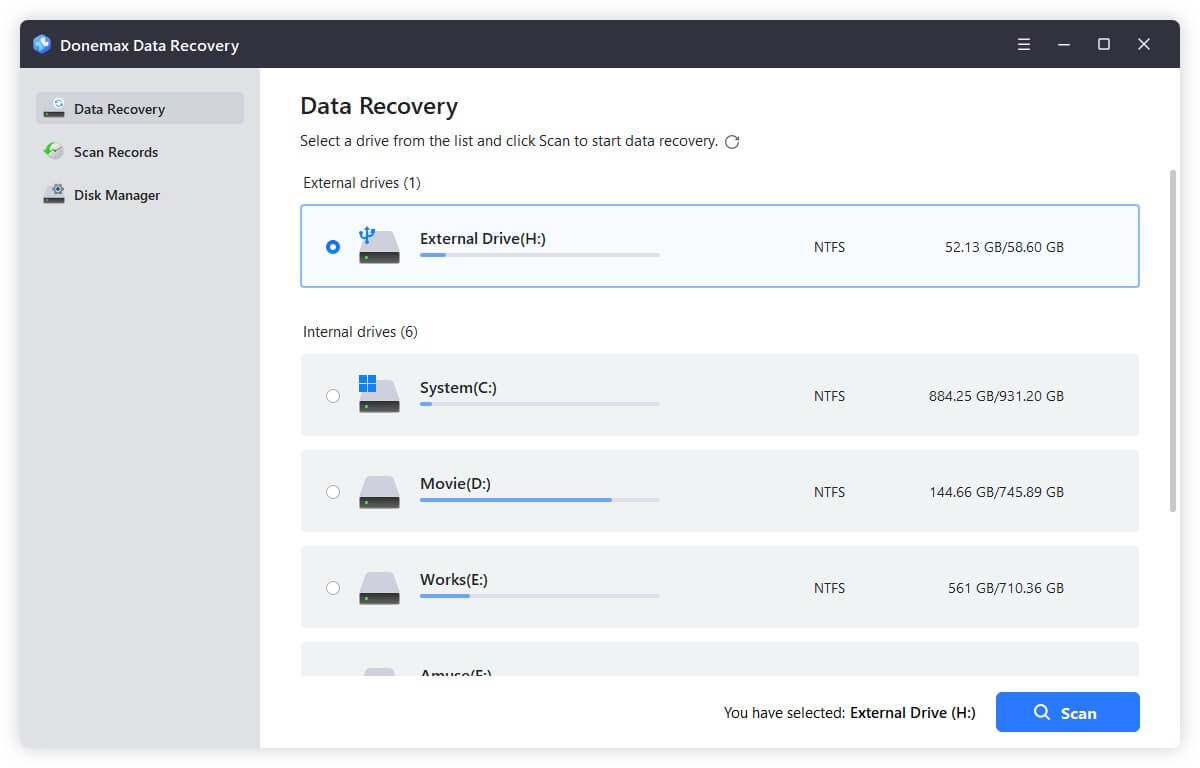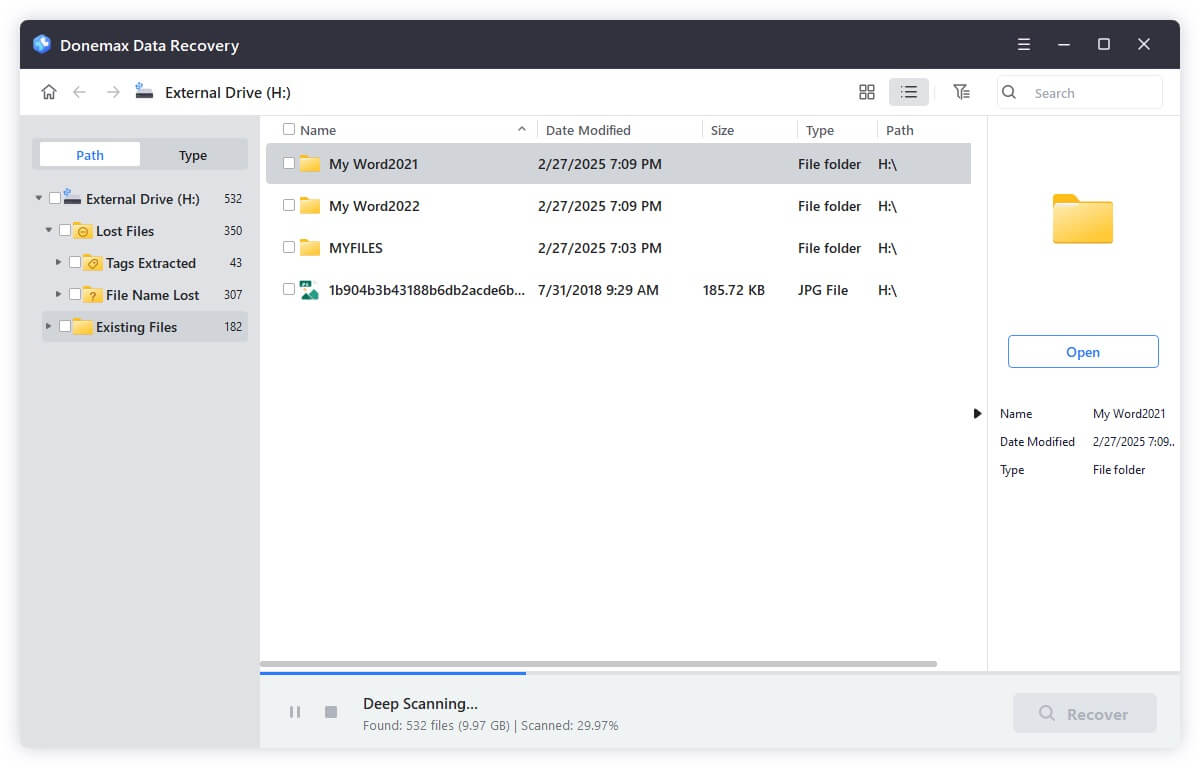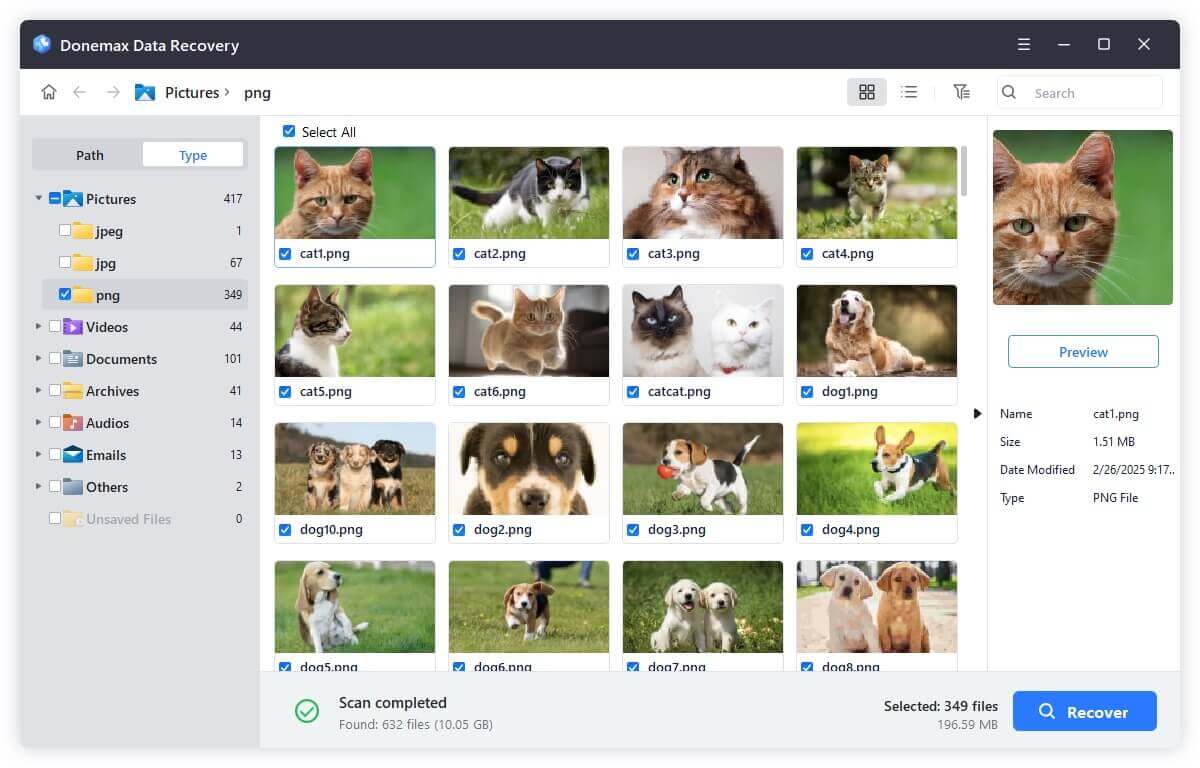Before we start: The folder containing your important files becomes empty? Don't worry, the deleted/lost files can be recovered! Data recovery software - such as Donemax Data Recovery can help recover lost files from the emptied folder on Windows, macOS, external storage device, etc.
PAGE CONTENT:
Discovering that a folder - especially one containing important documents, photos, or videos - shows up as empty can be both confusing and alarming. This issue commonly affects users working with USB flash drives, SD cards, external hard drives, or even internal storage. Often, the files aren't truly gone; they've either been hidden, corrupted, or displaced due to file system errors or malware. In this comprehensive guide, we'll explore why this happens and how to recover your files efficiently without causing further damage.
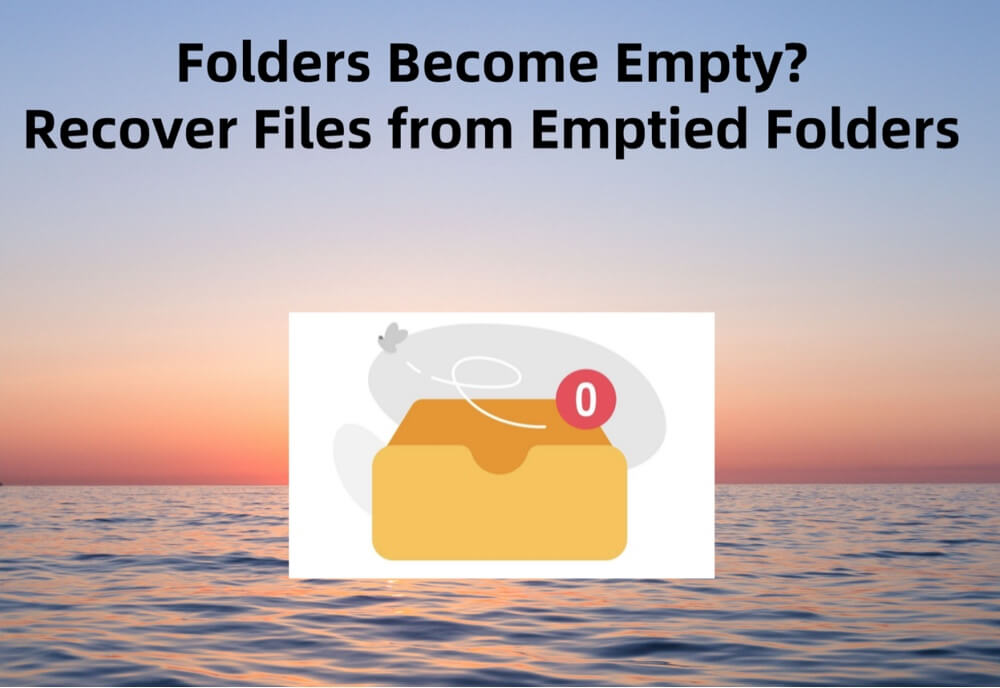
Understanding the Problem: Folder Appears Empty
A folder showing as empty when you know it previously held files is not unusual, and it doesn't always mean your data is permanently lost. Below are the common symptoms:
- The folder opens, but no files are visible.
- The storage device still reports used space.
- Antivirus alerts or sudden disconnections occurred before the issue.
- Files are missing after plugging into a different device.
Why Does This Happen? Common Causes
Understanding the root cause can help you select the most appropriate recovery method. Here are several reasons why your files may "disappear":
1. File System Corruption
Sudden removal, power outages, or improper ejection of external drives can damage the file system, causing directories to become unreadable or appear empty.
2. Hidden or System-Protected Files
Files may still exist but are hidden due to system settings or marked as "system" files after corruption or manipulation by third-party software.
3. Virus or Malware Infection
Malware can hide your files, redirect folders, or even alter file attributes to prevent them from being visible in File Explorer.
4. Accidental Deletion
You or someone else may have unintentionally deleted the files, which then go to the Recycle Bin (Windows) or Trash (Mac), unless shift-deleted.
5. Bad Sectors or Hardware Failure
Aging or defective storage devices may develop bad sectors, rendering certain files unreadable or making directories inaccessible.
Preliminary Checks Before Folder Recovery
Before diving into advanced recovery methods or tools, it's smart to carry out a few basic checks that might solve the issue quickly:
1. Try the Drive on Another Computer
Sometimes, the issue lies with the computer's USB port or driver. Plugging the drive into another system can confirm whether the problem is with the drive or the PC.
2. Show Hidden Files
Hidden files don't show up in File Explorer or Finder by default. You can change this behavior easily:
Windows:
- Open the folder.
- Click View in the menu bar.
- Enable Hidden items.
macOS:
- Press Command + Shift + . (period) to toggle hidden files. Or use third-party app - such as DMcleaner for Mac to quickly show all hidden files on your Mac.
3. Use Command Prompt to List Files
This is useful when File Explorer shows the folder as empty, but files exist.
- Open Command Prompt.
- Type:
dir /a X:\YourFolder
Replace X: with your actual drive letter.
If files appear, they're just hidden or have incorrect attributes.
How to Recover Missing Files from Emptied Folder? [6 Methods]
Method 1. Check Recycle Bin or Trash
If files were accidentally deleted, check your system's trash or Recycle Bin. If you find them, restore them to their original location.
Method 2. Run Disk Utility (macOS) or CHKDSK (Windows)
These tools help identify and fix file system issues:
Windows:
chkdsk X: /f
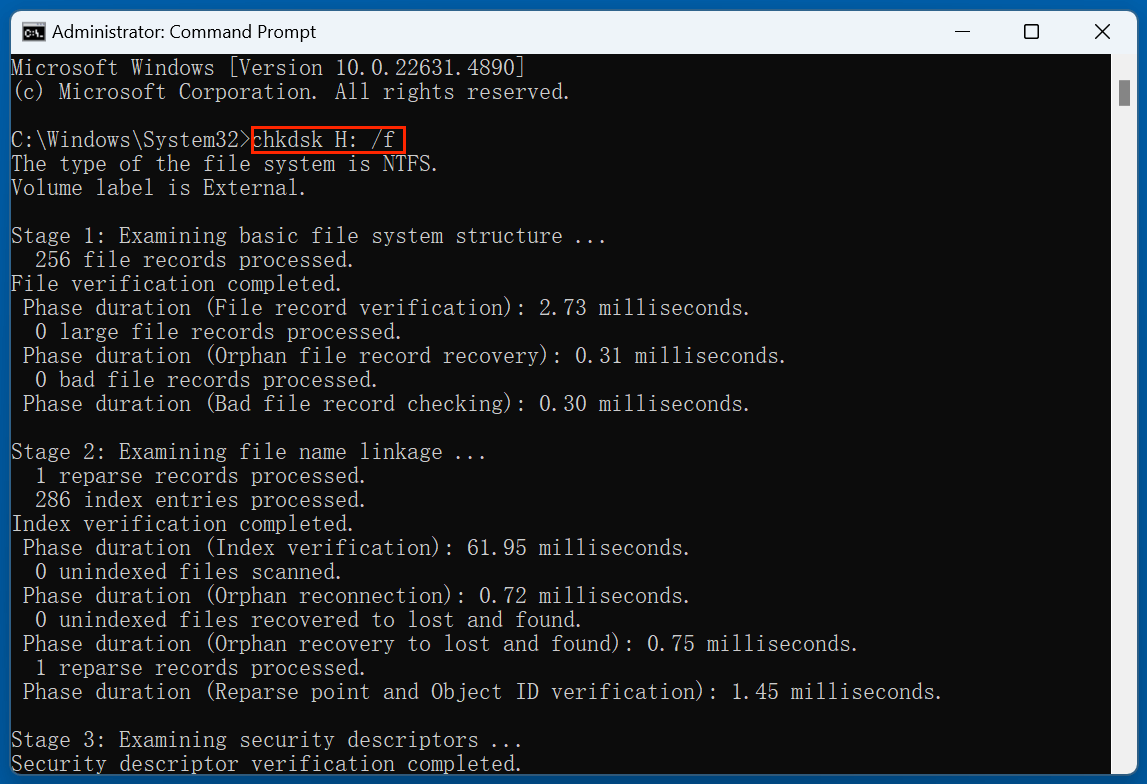
macOS:
- Open Disk Utility.
- Select the drive and click First Aid.
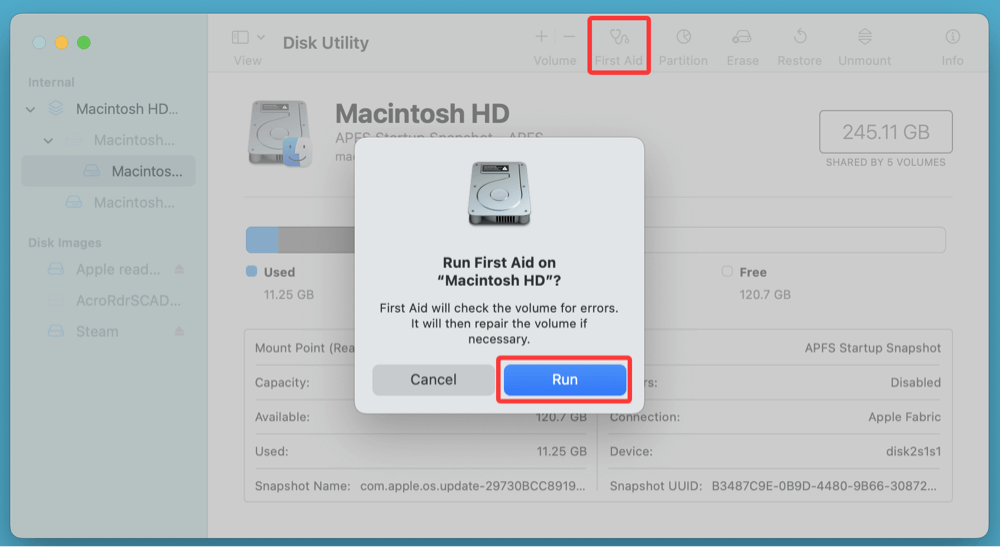
Method 3. Use Command Prompt to Unhide Files
Sometimes the issue is as simple as incorrect file attributes.
- Open Command Prompt (Run as Administrator).
- Use this command:
attrib -h -r -s /s /d X:\*.*

This command removes hidden, read-only, and system attributes from all files and folders on the drive.
Method 4. Use Data Recovery Software
If manual methods such as showing hidden files or using Command Prompt didn't recover your lost files, data recovery software is your next best option. These programs are designed to dig deep into your storage media, locating files that have been deleted, hidden, or lost due to file system corruption or formatting.
What Does Data Recovery Software Do?
These tools scan your drive sector-by-sector, looking for file signatures or metadata that can identify and restore previously existing files - even if the file system no longer recognizes them. Many tools can recover files after deletion, formatting, partition loss, and even some hardware failures (as long as the device is still readable by the OS).
Top Recommendations:
- Donemax Data Recovery: Offers deep scan and supports many file types.
- Do Your Data Recovery: Clean interface, good for both novice and advanced users.
- PhotoRec/TestDisk: Open-source, powerful, but not user-friendly.
Steps to Use (e.g., Donemax Data Recovery):
- Download and Install the software - Donemax Data Recovery on a different drive to avoid overwriting lost data.
- Launch Donemax Data Recovery, select the drive where the folder is stored.
![Select the Drive]()
- Scan the Drive – click on Scan button to deeply scan the drive and find all recoverable files.
![Scan the Drive]()
- Preview and Recover – choose the files you want and restore them to a safe location.
![Preview and Recover the lost Files]()
★ Tips for Successful Recovery
- Act Fast: Once you notice the issue, stop using the drive immediately to avoid overwriting lost data.
- Don't Install on the Same Drive: Never install recovery tools or save recovered files on the same drive you're recovering from.
- Use Deep Scan: If quick scan finds nothing or only partial files, opt for the deep scan for a more thorough search.
- Look in "Raw" or "Other Lost Files" Folders: Many tools group severely corrupted or orphaned files here.
★ Special Case: Recovering Files from a Corrupted USB or SD Card
Many users experience this issue specifically with portable storage. Here's how to approach recovery on these devices:
- Connect the USB or SD card directly to your computer (preferably without an adapter).
- Launch your recovery tool and select the removable device.
- Perform a full scan and preview recovered files.
- Save the files to your desktop or another safe location.
★ When Recovery Software Might Not Work
There are situations where DIY software won’t suffice:
- If the drive isn't recognized in Disk Management or Finder.
- If your drive makes clicking or grinding noises, indicating hardware failure.
- If the recovery tool shows 0 bytes or unallocated space with no files found.
In such cases, it's best to stop all attempts and consult a professional data recovery service before more data is lost.
Method 5. Use Backup (If Available)
Windows File History:
- Go to Settings > Update & Security > Backup.
- Choose More Options > Restore files from a current backup.
macOS Time Machine:
- Open Time Machine from the menu bar.
- Browse to the folder in question.
- Select the correct backup and click Restore.
Cloud Backups:
Check if your files were synced with OneDrive, Google Drive, or Dropbox.
Method 6. Professional Data Recovery Service
If the drive is physically damaged or you've exhausted all software options, professional data recovery services may be your last hope.
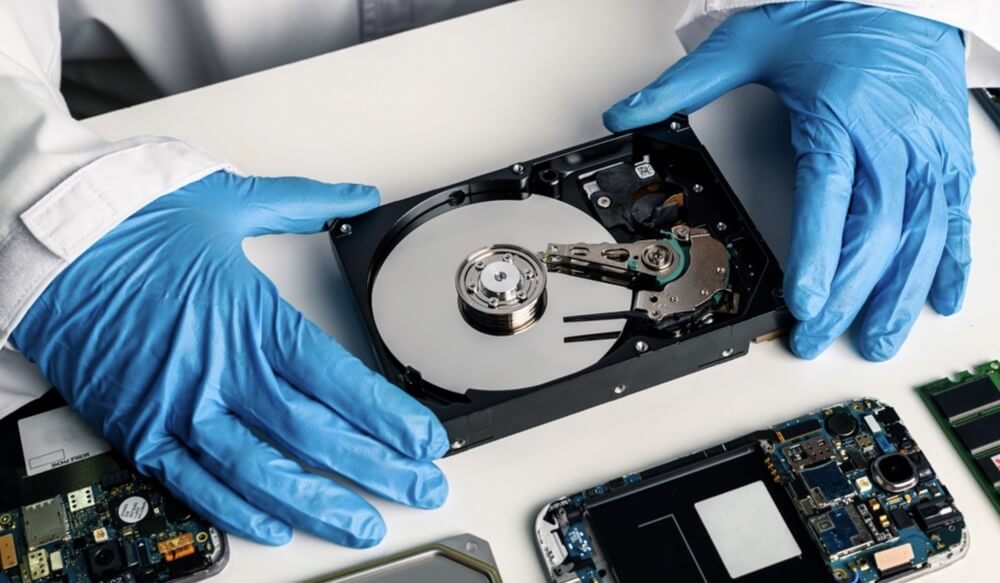
When to Consider This:
- The drive is making clicking noises.
- It's not recognized at all by any computer.
- DIY attempts have failed.
What to Expect:
- Evaluation and quote after initial inspection.
- Cost can range from $300 to $2,000 depending on severity.
- Services like DriveSavers, Ontrack, and SalvageData have a good reputation.
Preventative Measures for the Future
Once you've recovered your data, it's time to prevent this from happening again. Here are tips to avoid future file loss:
1. Backup Regularly
Use automated tools like Time Machine (Mac), File History (Windows), or third-party backup software. Always keep at least one copy offsite or in the cloud.
2. Use Antivirus Software
Malware is a frequent culprit. Install a reliable antivirus tool and keep it updated.
3. Avoid Improper Removal
Always eject drives safely. Force-removing them mid-transfer risks file corruption.
4. Avoid Overwriting Drives After Data Loss
Never copy new files to a drive with missing files before attempting recovery - this can overwrite recoverable data.
5. Use Quality Hardware
Cheap or low-end USB drives and SD cards are prone to failure. Stick to brands like SanDisk, Samsung, Kingston, and Crucial.
Conclusion
A folder showing as empty doesn't always mean all is lost. The issue could stem from something as simple as hidden file attributes or something more serious like file system corruption or hardware failure. The key is to remain calm and act methodically. Start with basic checks - like showing hidden files or running command-line tools - before moving on to professional data recovery software.
If all else fails, professional recovery services exist to help retrieve your valuable data. Once recovered, put proactive measures in place such as regular backups and safe ejection practices to avoid a repeat of the problem.
With the right approach, you can often recover your "lost" files - quickly, safely, and without stress.


Donemax Data Recovery
One of the best data recovery programs to recover deleted, formatted or lost data from PC, Mac, HDD, SSD, USB drive, SD card, camera, RAID, Sever or other storage devices.
Related Articles
- May 27, 2025How to Recover Deleted or Lost AVI Videos?
- Jun 28, 2025How to Recover Deleted LRCAT File (6 Methods)
- Nov 17, 2025Recover Deleted Ring Videos: Full Guide
- May 19, 2025[2025 Updated] Top 5 Data Recovery Services
- Jul 08, 20254 Methods to Recover Deleted .ts File – Step-by-Step Guide
- Jun 16, 2025How to Recover Deleted DV Files? [3 Methods]

Steven
Steven has been a senior writer & editor of Donemax software since 2020. He's a super nerd and can't imagine the life without a computer. Over 6 years of experience of writing technical solutions and software tesing, he is passionate about providing solutions and tips for Windows and Mac users.

Gerhard Chou
In order to effectively solve the problems for our customers, every article and troubleshooting solution published on our website has been strictly tested and practiced. Our editors love researching and using computers and testing software, and are willing to help computer users with their problems
